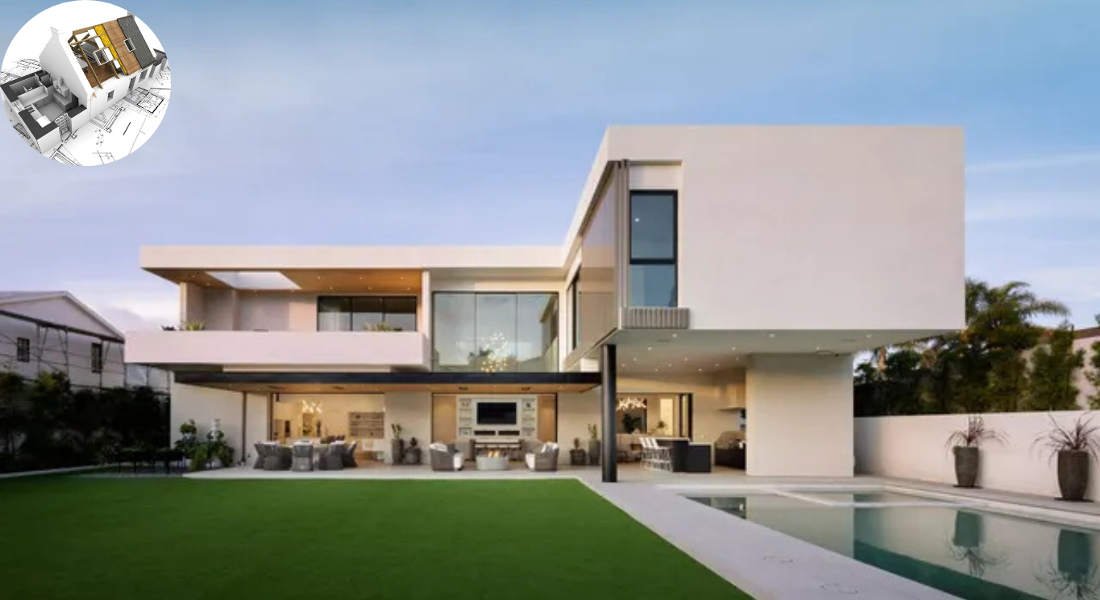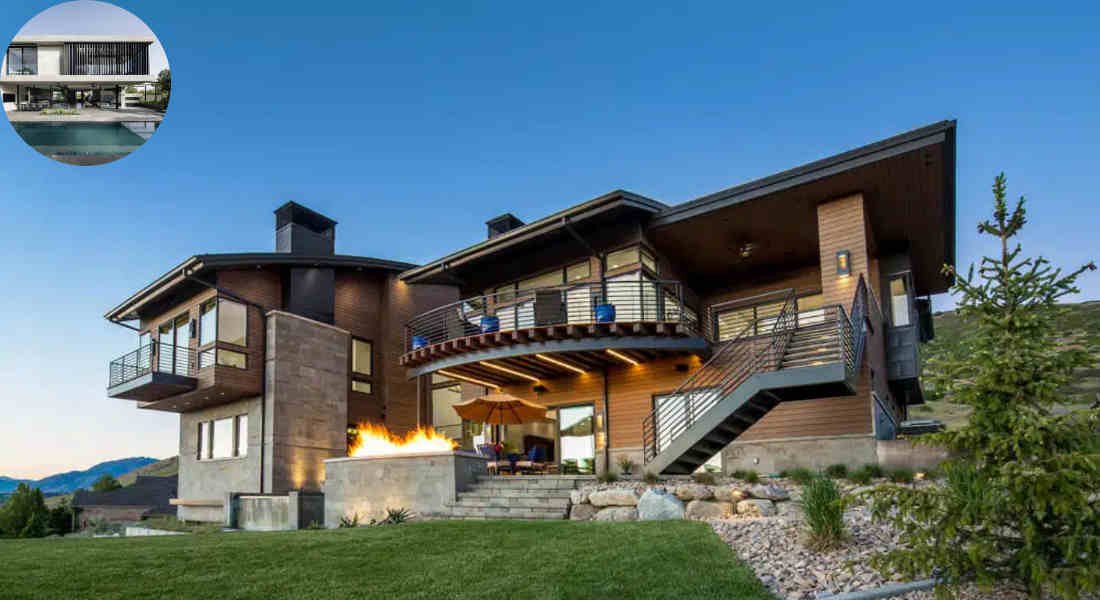Residential house architecture plays a pivotal role in shaping the spaces we inhabit. What is residential house architecture? At its core, it refers to the design and construction of homes that cater to the living needs of individuals and families. In contemporary society, this form of architecture has undergone considerable evolution, reflecting changes in our lifestyles, technological advancements, and growing environmental concerns.
Understanding modern residential architecture is essential, as it can significantly impact our daily lives. It influences how we interact with our environments, how we utilize space, and even how we connect with nature.
Understanding Residential House Architecture

Definition: What is Residential House Architecture?
Residential house architecture is the art and science of designing and constructing homes. It encompasses a wide range of styles, materials, and technologies, all designed to create functional and aesthetically pleasing living spaces.
Historical Perspective vs. Today’s Interpretation
Historically, residential architecture was heavily influenced by local materials, culture, and climate. Homes were built to provide shelter and comfort, often following traditional styles that reflected the community’s identity.
In contrast, today’s interpretation of residential architecture embraces a more globalized approach. Contemporary architects draw inspiration from diverse cultures and styles, blending them to create distinctive homes that cater to modern needs.
The Role of Architecture in Shaping Residential Living Spaces
Architecture serves as a canvas for expressing our values and priorities. It shapes how we live, work, and interact with one another. Well-designed residential spaces can enhance our quality of life, providing comfort, safety, and a sense of belonging.
How Residential Architecture Reflects Lifestyle, Culture, and Technology
Residential architecture is a mirror of our evolving lifestyles. As society becomes increasingly mobile and interconnected, our homes must adapt accordingly. Today’s designs reflect cultural diversity, technological advancements, and a growing awareness of sustainability.
Key Characteristics Defining Residential House Architecture Today

A. Integration of Sustainability and Eco-Friendly Practices
One of the most significant trends in contemporary residential architecture is the integration of sustainability. Homeowners and architects alike are increasingly prioritizing eco-friendly practices.
- Use of Sustainable Materials: Many new homes utilize materials such as hempcrete and bamboo, which are renewable and have a lower environmental impact compared to traditional options.
- Energy-Efficient Designs: Features such as solar panels, high-performance glass, and passive heating and cooling systems are becoming standard in residential designs. These innovations help reduce energy consumption and lower utility bills.
- Impact on Environmental Footprint: By adopting these practices, homeowners contribute to a healthier planet while also improving occupant health through better air quality and natural lighting.
You may also read (navigating permits for tiny homes on wheels).
B. Smart Home Technology and Intelligent Living
The rise of technology has transformed residential architecture into a more intelligent space. Smart home technology is no longer a luxury; it’s fast becoming a standard feature.
- AI-Driven Systems: Many homes now incorporate systems that automatically manage climate control, lighting, and security. This level of automation enhances convenience and safety.
- Benefits of Smart Homes: Smart technologies also facilitate energy management, enabling homeowners to monitor and reduce their consumption effortlessly.
C. Flexible and Multifunctional Spaces
As lifestyles become more dynamic, the demand for flexible and multifunctional spaces is on the rise.
- Adaptable Floor Plans: Modern homes often feature open floor plans that can be easily reconfigured to suit various needs, whether for work, leisure, or family gatherings.
- Movable Partitions and Hidden Storage: These features enable a personalized space that can adapt to changing lifestyles.
D. Contemporary Aesthetics and Materials
Today’s residential architecture often showcases a blend of contemporary aesthetics and materials.
- Mixing Materials: The use of diverse materials creates textured, multidimensional facades. A combination of wood, stone, and glass can evoke a sense of warmth and modernity.
- Minimalism with Local Aesthetics: Many architects favour minimalist designs that incorporate local elements, ensuring that homes resonate with their surroundings while maintaining a sleek appearance.
E. Biophilic and Nature-Integrated Design
A growing trend in residential architecture is biophilic design, which focuses on connecting indoor spaces with nature.
- Blurring Indoor-Outdoor Boundaries: Homes are increasingly designed with features like glass walls, courtyards, and abundant greenery, promoting a seamless connection to the outdoors.
- Benefits for Mental Wellness: This integration of nature has been shown to enhance mental well-being, reduce stress, and improve overall life satisfaction.
Popular Residential Architectural Styles in 2025

In 2025, various architectural styles are gaining popularity. Here’s an overview of some trending styles:
Modern Farmhouse
- Characteristics: A blend of traditional charm and modern convenience, often featuring large porches and a mix of materials.
- Appeal: This style resonates with those seeking a rustic yet sophisticated home.
Bungalow
- Characteristics: Typically single-story with a low roof, open floor plans, and built-in furnishings.
- Appeal: Ideal for smaller families or retirees looking for accessible living.
Industrial
- Characteristics: Raw materials like brick and metal, with an open layout that emphasizes functionality.
- Appeal: Attracts those who appreciate an edgy, urban vibe.
You may also read (do you pay sales tax on a used mobile home).
Minimalist Luxury
- Characteristics: Clean lines, open spaces, and high-quality materials with minimal decoration.
- Appeal: Appeals to individuals who prioritize simplicity and elegance.
Architectural StyleCharacteristicsAppeal
Modern Farmhouse Large porches, mix of materials Rustic charm
Bungalow Single-story, open floor plans Accessible living
Industrial Raw materials, functional layouts, Edgy urban vibe
Minimalist Luxury: Clean lines, high-quality materials, Simplicity and elegance
These styles demonstrate how contemporary architecture addresses modern needs while maintaining aesthetic appeal.
The Role of Wellness and Personalization in Modern Residential Architecture

Designing Homes for Occupant Well-Being
Today’s architects are placing a strong emphasis on wellness. This involves creating homes that prioritize natural light, air quality, and acoustics.
- Natural Light: Homes are designed to maximize sunlight, which can improve mood and energy levels.
- Air Quality: Good ventilation and the use of non-toxic materials contribute to a healthier living environment.
Personalized Spaces
A significant aspect of modern residential architecture is the focus on personalization.
- Reflecting Unique Lifestyles: Homes are increasingly tailored to meet the specific needs and preferences of their occupants, ensuring that each space resonates with its inhabitants.
- Incorporation of Wellness Features: Features such as home gyms, meditation spaces, and wellness rooms are becoming increasingly common, enabling residents to prioritize their health and well-being.
Future Trends Shaping Residential House Architecture
Increasing Emphasis on Modularity and Adaptability
Looking ahead, residential architecture will likely emphasize modularity and adaptability. This trend involves designing homes that can easily be expanded or reconfigured as families grow or change.
Advances in Sustainable Construction Technologies
Innovations such as 3D printing and the use of renewable materials are set to revolutionize the construction industry. These technologies will enable faster, more efficient building processes while minimizing environmental impact.
Future-Proofing Homes
As technology continues to evolve, future residential designs will focus on future-proofing. This means creating homes that can easily accommodate new technologies, ensuring longevity and relevance.
Growing Importance of Luxury and Bespoke Design Elements
Finally, there’s a growing trend toward integrating luxury and bespoke elements into residential designs. Homeowners are increasingly seeking unique, customized features that reflect their personal style and elevate their living experience.
You may also read (architecture the art of building beautiful homes).
